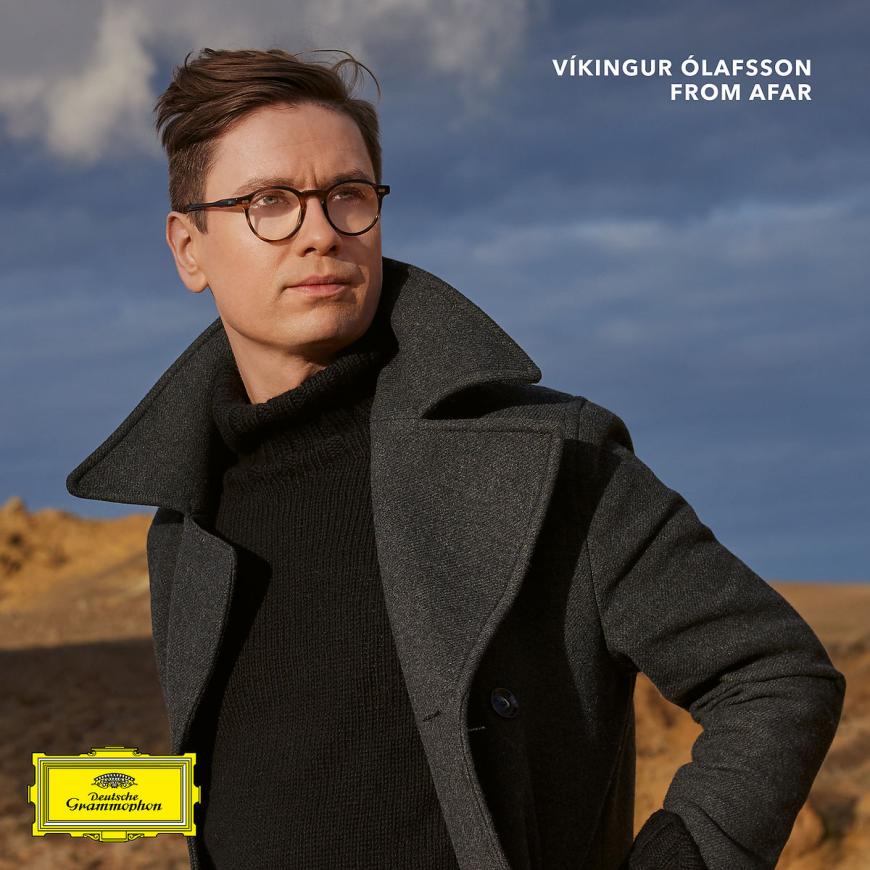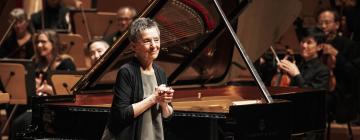
Víkingur Ólafsson’s recordings have been creative, quirky assemblages of short pieces and excerpts that are meant to be heard in one pass. So is his latest album, From Afar (Deutsche Grammophon). But this one tops them all in the sweep of its reach and adds a startling ingredient to double your pleasure.
As before, Ólafsson centers the album around one composer. This time, it’s György Kurtág, whom the Icelandic pianist met in Budapest after a sleepless flight from Los Angeles right after his performances at the Ojai Music Festival in September 2021. The meeting was momentous. “Wanting to write a letter to thank him,” Ólafsson writes, “I found myself at the piano instead, drawing up a map of works with Kurtág’s own music as a compass.”

In doing so, Ólafsson ranges farther afield than he has ever gone previously, patching together a program containing music by J.S. Bach, Mozart, Brahms, Robert Schumann, Béla Bartók, Thomas Adès, Sigvaldi Kaldalóns, and an Icelandic folk song interspersed with wisps of Kurtág from that last composer’s Játékok (Games) collection. And if that wasn’t enough, Ólafsson was so reminded of his childhood, from the program and from the experience of having both a Steinway grand piano and a rickety upright piano in his parents’ apartment, that he decided to record two versions of this album — one on a grand, the other on an upright. Both are included on separate discs in the slimline packaging.
The remarkable thing is how fundamentally similar the two pianos sound — and how distinctly defined Ólafsson’s exquisite touch and generally mellow tone quality are regardless of instrument. A good deal of this is due to the placing of a layer of felt over the strings of the upright, which definitely will tame the usual brightness and sometimes harshness of inexpensive pianos (Ólafsson calls it “a permanent soft pedal”). I hear far more mechanical noises from the upright piano, which is recorded very closely so that we might hear these sounds (the instrument may have been deliberately left unserviced by a technician, though they did take the trouble to tune it). The clatter the upright makes, though, isn’t very distracting once you get used to it.
Ólafsson professes that he wants to get the listener as close to the upright piano as possible in order to create an atmosphere of homespun intimacy. But we are always aware that we are in the presence of a world-class virtuoso, not an amateur or student trying to make music in the privacy of his home. This guy knows how to play.
He also is aware of how the characteristics of each piano will dictate differences in approach. In the second number on the album, Schumann’s Study in Canonic Form No. 1, there is a clear demonstration of this; Ólafsson devotes greater attention to color and dynamics and utilizes more creative pedaling on the grand piano than on the upright. The same composer’s “Traümerei” (Dreaming) is far more expressive on the grand than the upright, perhaps a bit excessively so. So it generally goes throughout the program.
The Kurtág pieces are mostly spare, quiet, enigmatic, and — perhaps surprisingly — compatible with those by the other composers. An exception to the pattern is Ólafsson’s duet with his wife Halla on the Allegro moderato from Bach’s Trio Sonata No. 1 in E-flat Major, in Kurtág’s arrangement for piano three hands — the liveliest thing on the program on both instruments (I’m conjecturing that Halla is playing the treble notes with her right hand).
As with Ólafsson’s previous albums, there are free-association, stream-of-consciousness rambles. Here’s the play-by-play for one of them: Kurtág delivers a lullaby, “Sleepily,” which leads directly to Schumann’s “Traümerei.” Then, Adès’s “The Branch” suggests Kurtág’s “Twittering,” which in turn leads to Schumann’s twittering “Vogel als Prophet” (Bird as prophet).
Belying its diversity, the whole lineup goes down easily when heard all at once, conveying a sense of distance between the notes that serves as a metaphor for writing a letter to a distant friend — all entirely appropriate to the idea of From Afar. And it doesn’t matter much which piano you are hearing.



